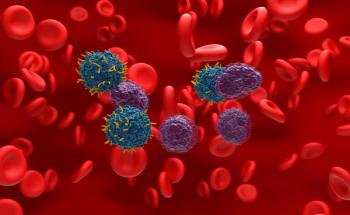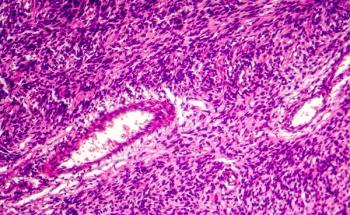
Signaling Pathways in MDS a Fruitful Area for Research, Drug Development
A review of recent research into myelodysplastic syndromes (MDS) shows a range of potential therapeutic targets.
New research into the pathogenesis of
Investigators reviewed the latest research
They began by outlining some of the latest developments in understanding phosphoinositide (PI) signaling. They noted that PI metabolism involves 13 PI-specific phospholipase C (PI-PLC) enzymes divided into 6 families, including PI-PLCβ.
“PI-PLCβ1 plays a pivotal role in both the onset and progression from MDS to AML, impacting genetic and epigenetic processes,” they wrote, noting that one study found nearly half (43.75%) of patients with MDS had a monoallelic deletion in the PI-PLCβ gene. Those patients had poorer outcomes and a greater risk of progression to
The team of authors said PLCG1 expression also appears to be an important marker. A recent study found patients with MDS (both with and without 20q deletion) had reduced PLCG1 expression, and patients with lower PLCG1 expression levels had worse outcomes.
“Therefore, reduced PLCG1 expression may be an independent prognostic factor for OS [overall survival] and the level of PLCG1 expression at the time of diagnosis may serve as a valuable prognostic biomarker for MDS,” they wrote.
Turning to epigenetic signaling, the authors said next-generation sequencing (NGS) has helped to identify “a multitude” of mutated genes associated with MDS.
“Notably, DNA methylation–related genes, as well as chromatin modification–associated genes, emerge as the most frequently mutated genes in MDS,” they wrote.
One important gene mutation is DNMT3A, they said, which occurs in 20% of AML cases, but no more than 10% of cases of MDS.
“Recent findings suggest that mutant DNMT3A leads to reduced methylation in specific regions and limits hypermethylation in AML cells,” they said. “Therefore, these somatic mutations in DNMT3A disrupt the normal processes of differentiation and self-renewal in HSCs [hematopoietic stem cells], providing a proliferative advantage and correlating with poorer OS in MDS patients. This increases the risk of malignant transformation in these individuals.”
Apoptotic signaling disruption also plays an important role in MDS, they wrote. They noted that mutations in the TP53 gene are a particularly notable indicator.
“TP53 mutations, occurring in 10% of de novo MDS cases and in 40% of therapy-related MDS, suggest high-risk MDS, rapid progression to AML, resistance to standard therapies, and a poor prognosis,” they said.
They said that patients with MDS have an imbalance of pro-survival and pro-apoptotic proteins in the Bcl-2 family, with patients who have high-risk MDS exhibiting a greater number of Bcl-2–positive cells.
“Therefore, high-risk MDS patients are potential good candidates for treatment with venetoclax (Venclexta; AbbVie), a Bcl-2–specific inhibitor, but also lower-risk MDS patients, in case of disease progression, may acquire resistance to apoptosis and start showing an abnormal expression of Bcl-2 proteins,” they said.
Lastly, the authors examined dysregulated cytokine signaling in the bone marrow microenvironment. They said more than 30 cytokines have been found to be abnormally expressed in the peripheral and marrow blood of patients with MDS.
“Notably, increased levels of specific cytokines, including tumor necrosis factor alpha (TNF-α), interferon gamma (IFN-γ), transforming growth factor beta (TGF-β), interleukin (IL)-6, IL-8, and IL-1β have been identified,” they said.
They added that research indicates these can be targets for therapy.
“Targeting the overactive TGF-β pathway with luspatercept (Reblozyl; Bristol Myers Squibb) in low-risk MDS has shown encouraging results and stands as the only approved therapy in a specific subset of patients, with ongoing developments in similar agents,” they wrote. “Additionally, the anti–IL-1β antibody canakinumab (Ilaris; Novartis) is being assessed for its potential in treating lower-risk MDS, either alone or in combination with other drugs.”
The investigators said all of these advances, taken together, show that a better understanding of the signaling pathways at play in MDS can lead to improvements in its treatment.
Reference
Casalin I, De Stefano A, Ceneri E, et al. Deciphering signaling pathways in hematopoietic stem cells: the molecular complexity of Myelodysplastic Syndromes (MDS) and leukemic progression. Adv Biol Regul. Published online January 12, 2024. doi:10.1016/j.jbior.2024.101014
Newsletter
Stay ahead of policy, cost, and value—subscribe to AJMC for expert insights at the intersection of clinical care and health economics.














































